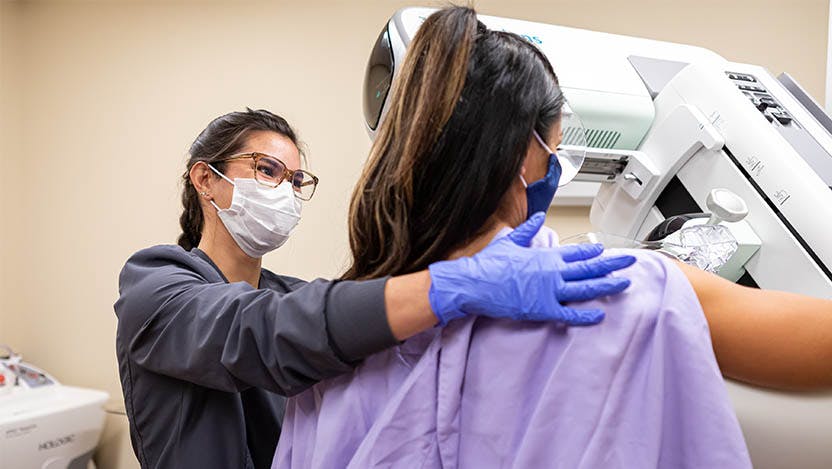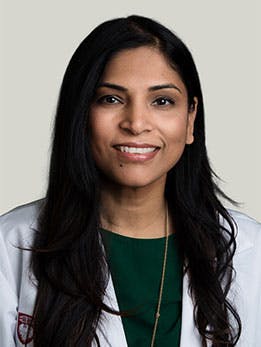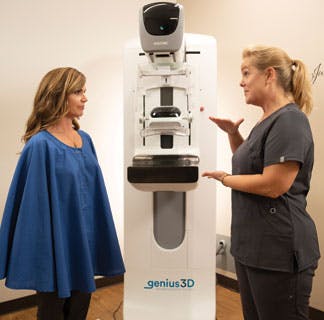Understanding the new National Comprehensive Cancer Network guidelines on breast cancer screening

Without a doubt, the guidelines surrounding when you should get a mammogram can be confusing. Different organizations have their own recommendations on how often you should go — is it annually at 45 years old or every two years at 55?
New guidelines by the National Comprehensive Cancer Network (NCCN), a nonprofit grouping of cancer centers, help dispel some of this confusion: The NCCN is recommending annual screening starting at age 40, a recommendation shared by the American College of Radiology.
Breast cancer risk is different for every individual. Despite knowing some factors like your family history, you may not be aware of how your genetic makeup affects your risk. And although testing for the BRCA1, BRCA2 and other genes is available, only 15% to 20% of breast cancer cases are hereditary.
Unfortunately, we're still not at a point where we can tailor screening with precision for every patient, which is the future of breast cancer screening. But we do know that mammograms are vital for cancer detection and that they save lives, which is why the NCCN is recommending them annually.
The NCCN guidelines focus on understanding your risk factors for developing breast cancer, starting at age 25:
- If you're at average risk, screening mammograms should start at age 40.
- If you're considered high risk — meaning your chance of developing breast cancer in your lifetime is 20% or more, based on breast cancer risk assessment models — the NCCN recommends an annual screening mammogram starting as early as 30 and/or breast MRI starting as early as 25.
- If you have dense breasts (C- or D-rated breast density), you should have a breast MRI in conjunction with a mammogram, or a whole breast ultrasound in addition to a mammogram.
If you're not sure what your breast density is, look for this information on your previous mammogram.
Patients at high risk should talk to their physician about ways to reduce their risk.
Once you’ve started getting an annual screening mammogram, the NCCN recommends that you continue to have one every year. People are living longer, thanks to healthier lifestyles and by reducing their risks, such as quitting smoking and getting regular exercise. If we find a small cancer, we can treat it, even in your 70s and 80s.
Other cancer organizations recommend a more nuanced approach to mammogram screenings. The American Cancer Society, for instance, supports individuals between the ages of 40 and 44 having the choice to get annual mammograms; those 45 to 54 having annual mammograms; and those 55 years and older either continuing with annual mammography or switching to every two years.
Getting call-backs
Like the NCCN, these organizations base recommendations off their own analyses of the risks and benefits of mammography. They may give more weight to the risk that a healthy woman is called back after an initial mammography X-ray, undergoes further diagnostics like an ultrasound (and, in some cases, a biopsy), only to determine she does not have cancer.
If you’ve ever had mammography before, you may have experienced one of these call-backs. This, understandably, can be very stressful. But just because you get called back for additional imaging, it doesn’t mean you have breast cancer. Dense breasts or first-time mammograms may lead a radiologist to take extra precautions when interpreting what ends up being a benign fibroid or cyst. More than 80% of call-backs do not result in a cancer diagnosis.
The NCCN’s annual mammogram recommendations, along with its focus on understanding each individual’s risk of developing cancer, couldn’t be more timely: 1 in 8 women will develop breast cancer, and the pandemic dramatically affected the ability of many of us to get care that isn’t related to COVID-19. One study found that breast cancer screenings provided by a national program plummeted 87% in April 2020, compared to the previous five-year averages for the same month. Today, we’re finding cancers that would otherwise have been picked up through mammography; some have already spread.
Understand what your risks are, and talk to your primary care provider or your breast specialist so that you understand what you need to do before your next yearly mammogram.

Kirti Kulkarni, MD
Radiologist Kirti Kulkarni, MD, specializes in breast and abdominal imaging. Dr. Kulkarni provides comprehensive screening, diagnostic and interventional procedures for breast health. Additionally, she offers diagnostic imaging and interventional services for patients with abdominal and pelvic disorders.
Learn more about Dr. Kulkarni
A Comfortable Mammogram?
New breast screening technologies, like breast-shaped mammogram paddles and high-speed MRIs, are helping make breast cancer testing more comfortable, accurate and convenient.
Learn more